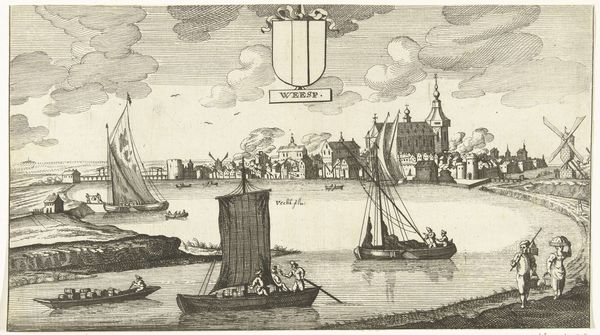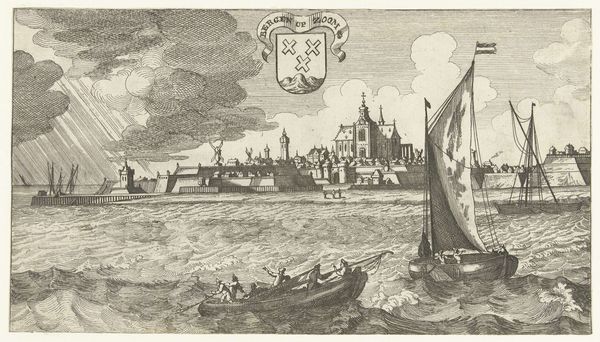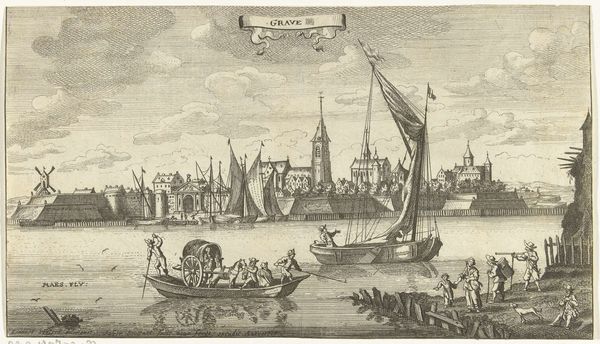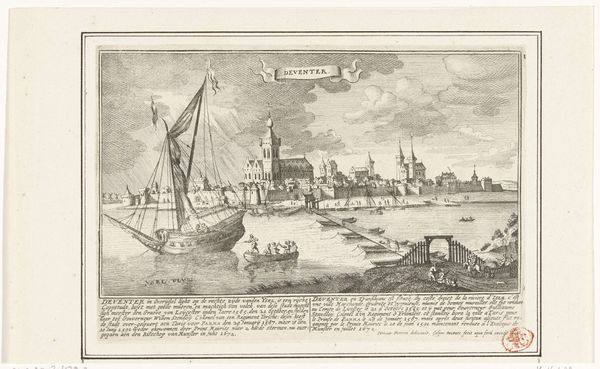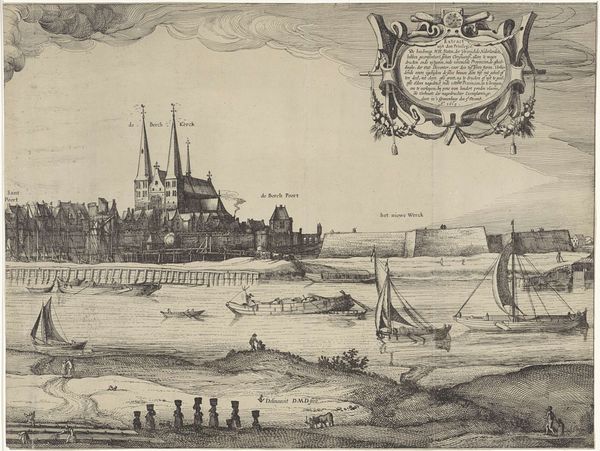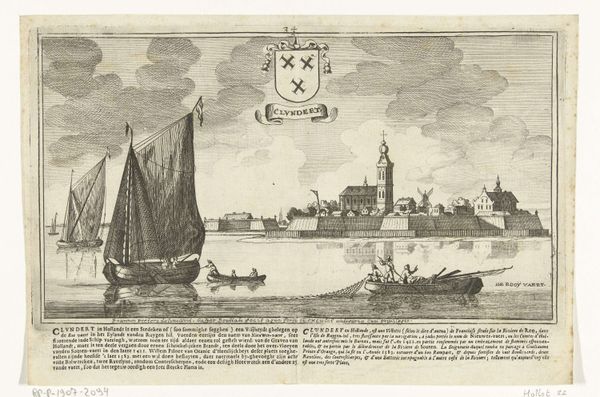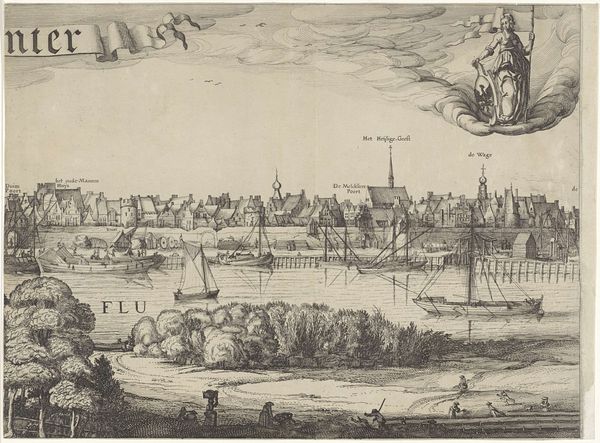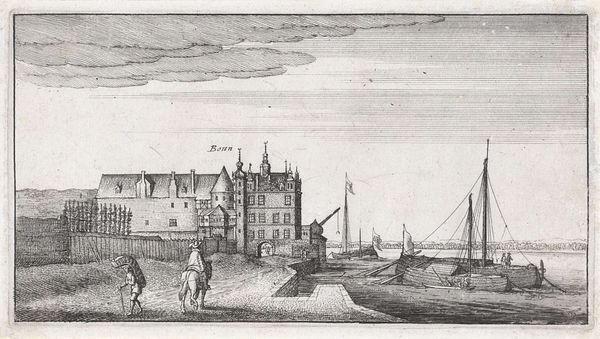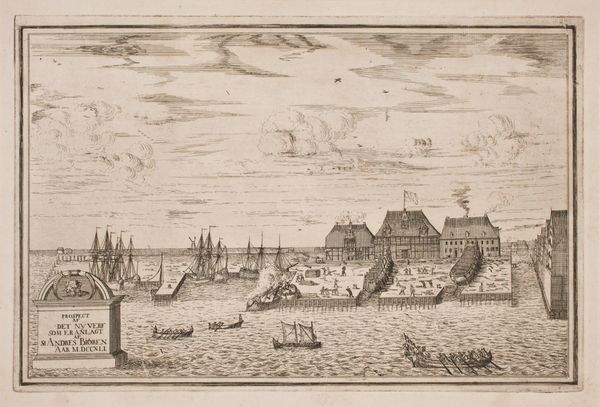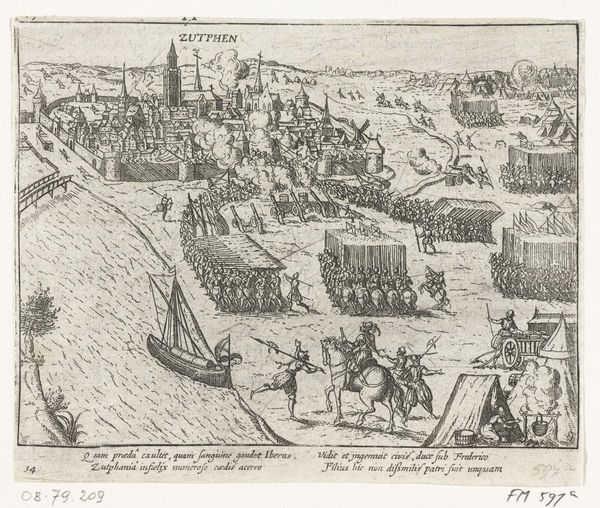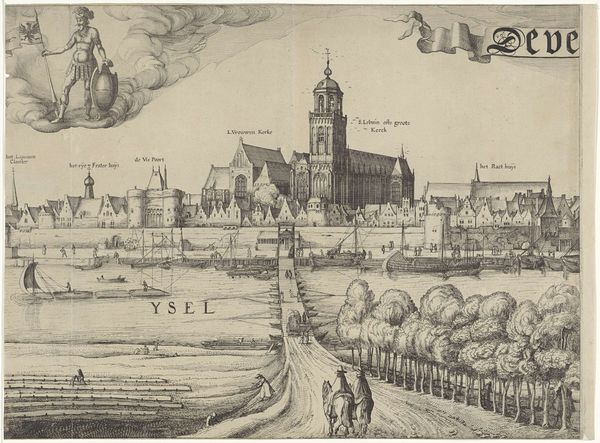
print, engraving
#
dutch-golden-age
# print
#
landscape
#
cityscape
#
engraving
Dimensions: height 175 mm, width 364 mm
Copyright: Rijks Museum: Open Domain
This is a print called “View of Emden,” made by Gaspar Bouttats in the late 17th century. It's an etching, meaning that the artist would have covered a copper plate with a waxy ground, drawn an image into that surface with a sharp needle, and then bathed the plate in acid. The acid bites into the exposed lines, leaving an image that can then be inked and printed. The precision of this technique lends itself to the depiction of cityscapes, like this one. Notice the textures produced by the etched lines – the way the water shimmers, the crispness of the architecture. It is all very evocative. Prints like this were not just works of art; they also served an important social function. In a time before photography, they were a primary means of circulating images, and knowledge, of places near and far. The very act of printing implies that the image will be widely shared. And so, this seemingly straightforward image speaks volumes about the culture that produced it – one in which seeing, knowing, and sharing were increasingly intertwined.
Comments
No comments
Be the first to comment and join the conversation on the ultimate creative platform.
